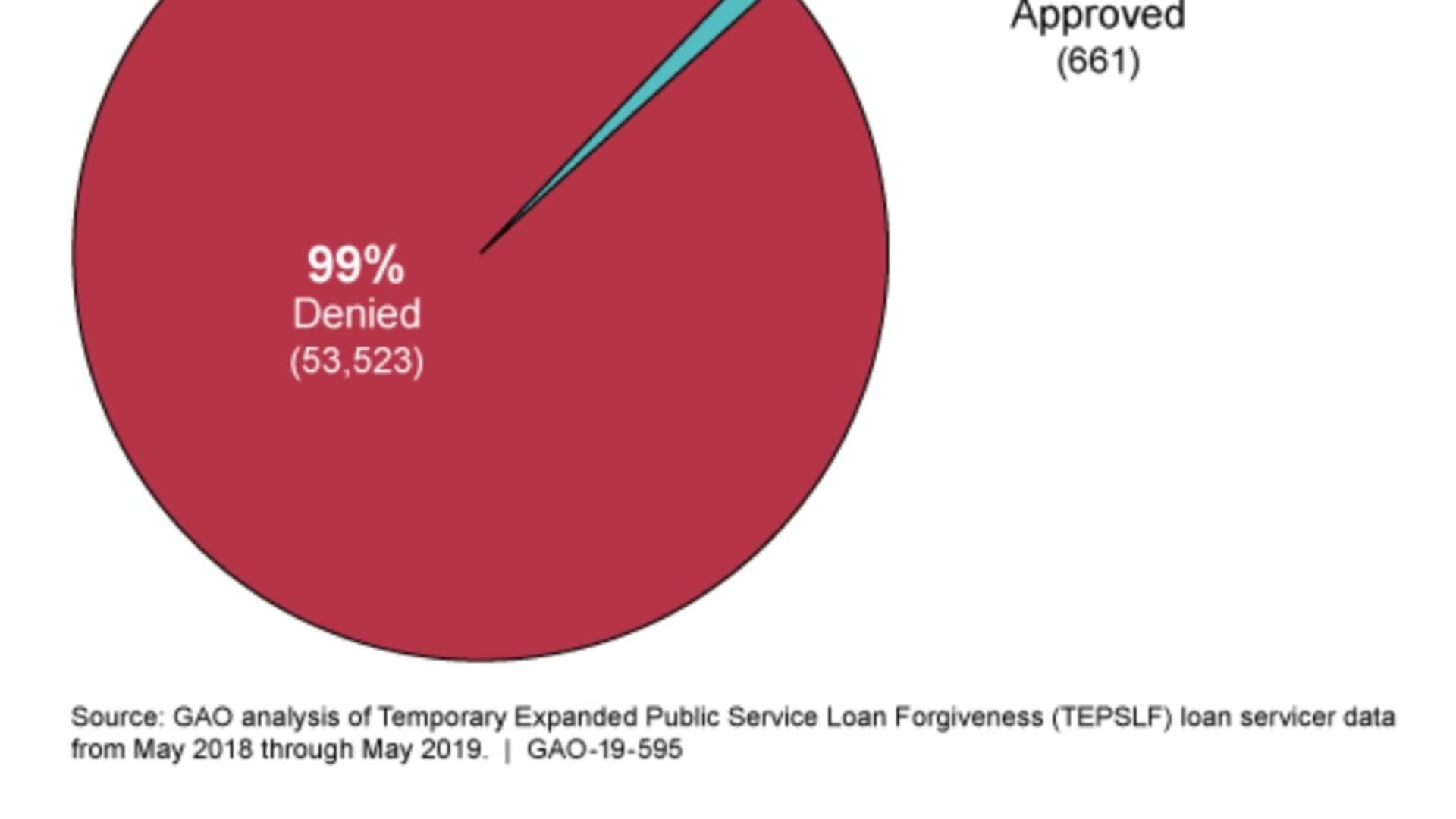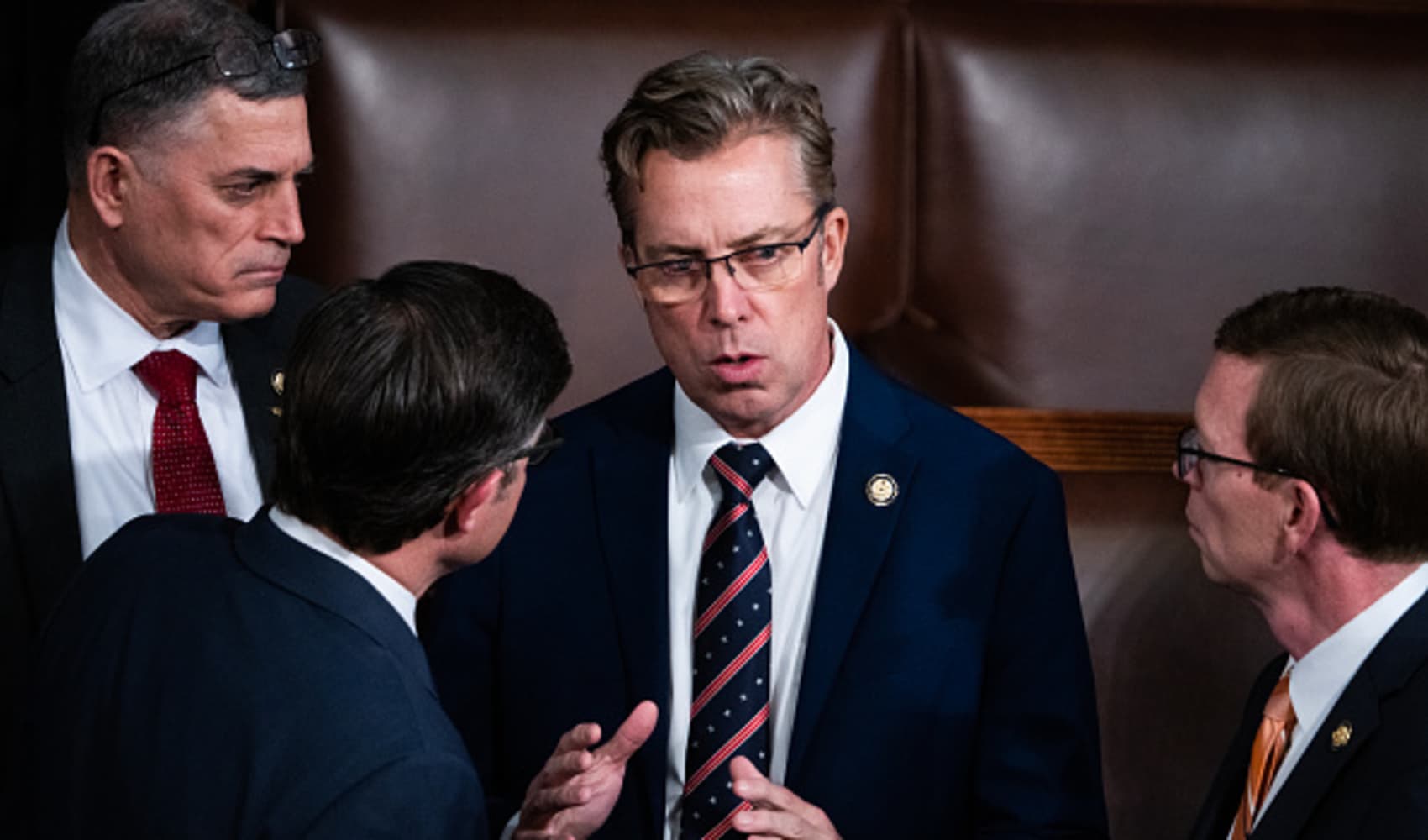
The U.S. Already Has Student Debt Forgiveness—But Barely Anyone Gets It
The Biden Administration has indicated the president will call on Congress to forgive $10,000 in student debt for all borrowers — a step down from what leaders of his own party have called for. House and Senate Democrats have urged President Biden to "broadly" forgive up to $50,000 of federal debt through executive order.
The public dialogue has renewed interest in student debt relief, but what many may not realize is the United States already has student debt forgiveness programs — a societal acknowledgment that student debt forgiveness can be fair and necessary — it's just that often very few people actually benefit from these programs.
For instance, while the Obama administration had approved student loan forgiveness for borrowers who were found to have been defrauded by for-profit schools, the Trump administration delayed forgiveness, making it nearly impossible to qualify. That is until last week when the Biden Administration announced that some 72,000 borrowers who were defrauded by their schools will receive student loan forgiveness, totaling up to $1 billion.
For decades, politicians (including Biden) have proposed adjusting existing student debt forgiveness programs. But as support for more broad student debt forgiveness swells, many experts stress that any new policy must learn from the mistakes of the past.
Get top local stories in San Diego delivered to you every morning. Sign up for NBC San Diego's News Headlines newsletter.
Income-driven forgiveness
Since 1995, the U.S. has offered income-driven repayment options that allow federal student loan borrowers to pay a percentage (typically 10%) of their discretionary income towards their loans each month with the promise of having their remaining balances discharged after 20 or 25 years, depending on the policy.
While the program was intended to give borrowers an affordable pathway out of debt, some low-earning borrowers end up owing more over time because their mandatory payments are not enough to cover the ballooning interest.
Money Report
The National Consumer Law Center estimates that while approximately two million student loan borrowers have been in repayment for more than 20 years, just 32 borrowers have ever qualified for loan cancellation through the federal government's income-driven repayment program.
Persis Yu, director of NCLC's Student Loan Borrower Assistance Project says the program has not led to student loan forgiveness for more borrowers because of a lack of awareness about the program and because of "Byzantine" hurdles borrowers must overcome in order to qualify.
"There are a lot of minefields that borrowers have to wade through in order to get into the income-driven repayment plan and stay in the income-driven repayment plan," says Yu explaining that borrowers must re-enroll in an IDR plan each year in order to qualify. "And we also know that there have been significant roadblocks in the way for borrowers with servicers steering borrowers into deferment or forbearance or not letting them know about their options."
Of the 45 million Americans with student loan debt, 8 million are currently enrolled in a federal IDR plan. Yu argues that the current system does not incentivize servicers to help borrowers achieve discharge.
"Income-driven repayment is administratively burdensome for both borrowers and for servicers," she says. "It takes more work to counsel a borrower and for some servicers, that payoff isn't worth it. One of the things that we've seen is that some servicers have limits on the amount of time that a call representative was supposed to talk to a borrower. Well, you can't adequately counsel somebody on an income repayment plan if you just have a certain number of seconds or minutes in order to do so."
The low number of people who actually receive student debt discharge is "very analogous to what happened with the public service loan forgiveness program," says Yu.
Forgiveness for public service
A second current policy in place that allows for federal student debt forgiveness is the Public Service Loan Forgiveness (PSLF) program.
The College Cost Reduction and Access Act of 2007 created the PSLF, which allows for borrowers with federal direct loans who make 120 qualifying monthly payments while working full-time for a qualifying employer to have the remainder of their balance forgiven. Qualifying employers include any federal, state, local or tribal government and not-for-profit organizations
But similarly, the program has not led to forgiveness for many borrowers.
In 2018, the Department of Education released data that indicated 29,000 borrowers had applied to have their student loans forgiven under PSLF, but only 96 received forgiveness. That means that over 99% of borrowers who applied were rejected
In response, Congress authorized an expansion of the program. However, a 2019 Government Accountability Office report found that approximately 99% of loan-forgiveness requests under that newly expanded program were rejected. According to the report, the Department of Education processed nearly 54,000 requests for forgiveness, approved just 661 and spent only $27 million of the $700 million Congress set aside for the expanded program.

A recent survey of 664 public sector employees with federal student loans by AIG Retirement Services found that while 90% of public sector workers with college debt are aware of the PSLF program and 84% find the program appealing, 70% "exhibit only a minimal understanding" of the program's rules and requirements. Just 30% of those surveyed demonstrated a general understanding of how to qualify.
"A lot of the people we surveyed were aware of the PSLF program but they really weren't sure how to navigate it," says Rob Scheinerman, CEO of AIG Retirement Services. "As student debt forgiveness becomes a prominent discussion point in public policy, it gives us a platform to let people know that it exists right now."
What can be learned
But as new student debt forgiveness proposals progress, people like Yu and Ashley Harrington, federal advocacy director and a senior counsel at the Center for Responsible Lending say that current student debt forgiveness policies can provide an even more important lesson about how to efficiently provide significant student debt relief: simplicity is key.
"One of the takeaways from these student loan forgiveness programs is that trying to parse out who deserves cancelation and who doesn't is actually really hard," says Yu. "And so the most efficient, the fastest way and the way to ensure that you actually are getting relief to people who need it is to give it to everyone. That is the most equitable way to make sure that you're not wasting government resources slicing and dicing the student loan portfolio and spending money to keep money from other people, instead of just getting it to the folks who need it."
"What we have learned from income-based repayment, public service loan forgiveness, these programs that are supposed to provide relief to student borrowers, is how difficult it is," says Harrington. "The fact that only 32 borrowers have gotten IBR forgiveness, the fact that so few borrowers have gotten PSLF forgiveness (even when Congress took steps to fix some of the servicing errors), just highlights why we need to make broad-based cancelation as easy to access as possible and not put up barriers."
"Because we know what happens when we put those barriers up."
Don't miss:
- The student debt forgiveness debate highlights the gender gap in what borrowers owe
- Senate Covid relief bill would make student debt forgiveness tax-free
- Millions of Americans are behind on their student loans—how it impacts debt forgiveness






